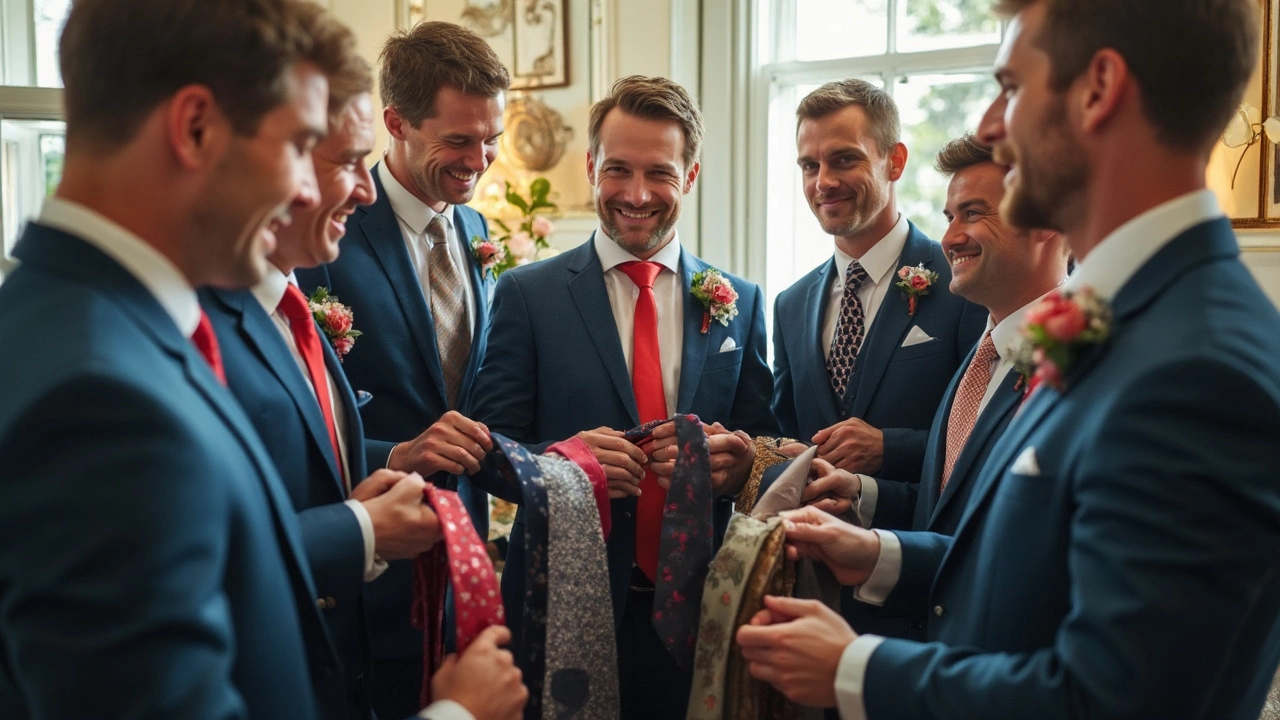Ties – Your Guide to Groom Neckwear for the Big Day
When the groom steps up to the altar, his neckwear can set the tone for the whole look. A well‑chosen tie or bowtie adds polish, shows personality, and ties (pun intended) the outfit together. Below you’ll get clear, practical advice so you won’t waste time or money.
Tie or Bowtie? How to Choose
If you’re stuck between a classic tie and a bowtie, start with the wedding vibe. Formal affairs with black‑tie dress codes usually call for a bowtie. More relaxed or traditional settings often favor a slim, dark tie. Don’t forget the suit color: navy or charcoal pairs nicely with a navy or burgundy tie, while a light grey suit shines with a pastel or patterned option.
Next, think about the groom’s comfort. A tie can slip or feel heavy in summer heat, whereas a bowtie stays in place and is cooler. Test both at the venue if you can – a quick photo in natural light will reveal which looks better on camera.
Practical Tips for Wearing and Caring for Your Tie
Pick a fabric that matches the season. Silk is timeless but can be sticky in July; lightweight wool or matte cotton work great for autumn or spring weddings. When you buy, ask for a tie with a strong stitching at the seam – it prevents fraying after a night of dancing.
Keep your tie tidy with a proper knot. The simple four‑in‑hand knot works for most ties and gives a clean look. Practice in front of a mirror a week before the ceremony so you’re not scrambling on the day. If you choose a bowtie, pre‑tie it and practice the adjustment; a well‑balanced bow looks effortless.
Stain protection is easy. Slip the tie into a protective sleeve when you’re not wearing it, and avoid spraying perfume directly on the fabric. If a spill happens, dab gently with cold water and a mild detergent, then hand‑wash and air dry. Never wring or tumble‑dry – it can ruin the shape.
Match accessories thoughtfully. Pocket squares that echo the tie’s pattern add visual interest without clashing. Cufflinks should complement the metal tone of the tie’s tip (silver with a grey tie, gold with a warm tone). Shoes and belt should stay in the same color family as the suit, leaving the tie as the focal point.
Budget‑wise, you don’t need a designer label. Many reputable brands offer quality silk ties for under £30. Look for sales after the wedding season; you can often snag a premium tie at a fraction of the price. A good tie lasts for years, so consider it an investment in future events.
Finally, remember the little details. Make sure the tie length reaches the belt buckle – that’s the gold standard. Check the knot’s symmetry; an uneven knot looks cheap. And have a backup tie or bowtie on hand just in case something goes wrong during the ceremony.
With these tips, the groom’s neckwear will feel confident, look polished, and stay stress‑free. Whether you pick a classic tie or a daring bowtie, the right choice will help the whole wedding vibe feel cohesive and personal.
Does the Groom Buy the Ties? Essential Guide for Wedding Suits
Thinking about wedding suits and wondering if the groom should buy the ties? This article explains who usually buys the ties, how to choose the right ones, and what traditions or modern trends say about it. Expect real-life tips, budget-friendly advice, and a few surprising facts you might not have considered. Whether your crew is classic or quirky, this guide covers what actually works for today's weddings.
View More